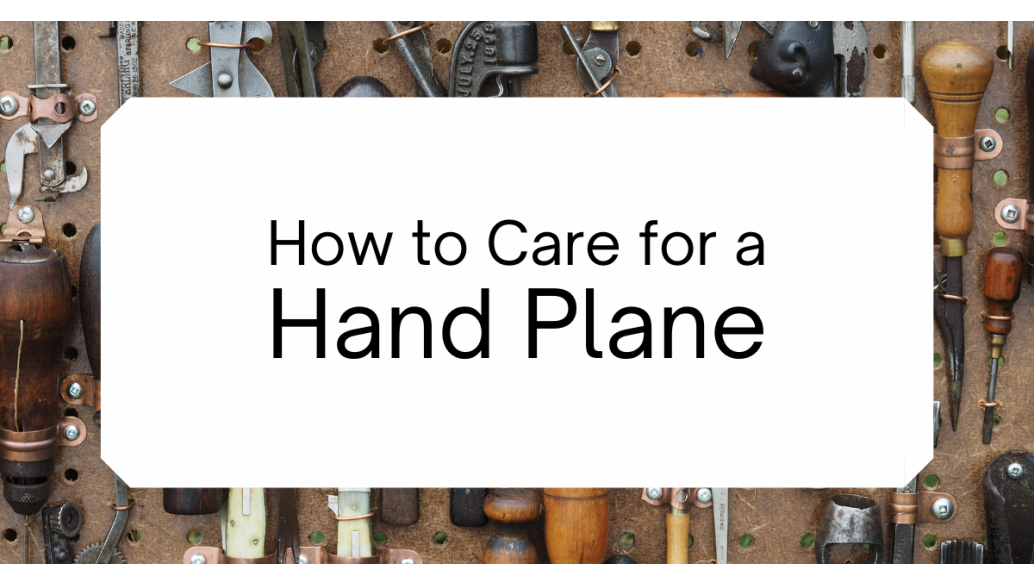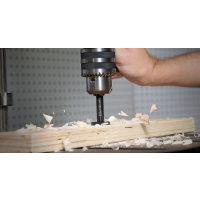Learning how to use your tools tools is an important part of starting your woodworking or DIY journey. Power tools, machinery, and other jigs and fixtures are great choices that help make the job go faster. But one of the most rewarding things to have in your bag of tricks is good hand tool skills. These can range from paring with a chisel to using a dovetail saw to create a traditional look in a set of drawers with handmade joinery.
One of the most satisfying skills is using a hand plane. But before you produce paper-thin shavings, you need to understand how to care for and tune your plane properly. By no means is this an exhaustive list, but a few top tips to get started.
Parts that fit properly
Don’t feel bamboozled by the parts in your plane: they’re designed to work together, but they do need some maintenance from time to time.
The chip breaker goes behind the blade and gives it support during the cut. It needs to be a good fit behind the blade. Being a “good fit” means it makes good contact across the back of the blade and is as straight and square as possible. The straight and square part is not an exercise in millimeter precision, but it should be good enough for you as the user. A cap iron goes on the front of the blade and sandwiches the blade to the chip breaker. Having good mating parts here will support the blade while it does its work and in turn produces the result you are looking to achieve.
Next up: the frog. This is the incline that sets the angle for the blade. It’s important to inspect the frog and look for burrs or imperfections that would affect the seating of the blade. In a brand-new plane, this is a two-minute job with a fine file or sandpaper. In an older plane that you pick up at a swap meet or garage sale, this will take closer to 10 minutes, and you might need to give it some tough love.
Again, you are not looking for perfection — you are looking for a clean bed on which to mount the blade. This means a thorough inspection of the frog and spending the time to get it cleaned up to your expectation.
Secondly, think ahead to your final assembly here, as you want the blade or iron to be fitted so that it is square to the sole (base) of the plane. This can be done with some trial fitting and final adjustment during the final install, but you want to be satisfied that you have done a good job and the frog is ready to go.
A flat/square sole
Believe it or not, the sole of your plane is not flat. Well, that is not 100% correct — most hand plane soles are not flat. If you purchase a new plane from a premium brand, the sole is flat to within a precise tolerance and there is no need for flattening. Outside of that, it is best to check before you put your plane into service.
To flatten the sole of your plane you will need a pencil, a sheet of glass, multiple sheets of 180-grit sandpaper, and some light oil-based lubricant. A small straight edge is also useful when looking at the length vs. side-to-side flatness.
Secure the sheet of glass to a bench and fix some sandpaper to it. With mild pressure, rub the sole of the plane on the sandpaper and then inspect the bottom. The flatness of the glass will mate with the flatter spots on the plane and will remove some material. Those areas that are not being affected by the sandpaper are areas of concern. Mark these areas lightly with a pencil so as you begin flattening in earnest you can see your progress. When the pencil marks are gone and you are rubbing the entirety of the sole of the plane on the sandpaper, you’re finished!
There are more in-depth articles or videos out there that can walk you through the process, so have a look at those before you start. It really is worth the time on this point as your work will improve and your satisfaction with your work will too.
Razor-sharp blades
Even if you have not been woodworking long, you’ll have figured out that sharp tools make easy work. This is especially true of your plane iron. There are several methods to sharpen blades. Find the way that works best for you and your budget. Like flattening the sole, sharpening your plane iron is an area where more time should be spent. You will need to invest in some good, quality sharpening stones and a jig that holds the blade at the right angle. These sharpening supplies can be used on other tools such as chisels, and they’re well worth the investment. See our article on sharpening here for more information on where to start.
Storage
Storing your tools after use is an important step, so don’t neglect it. Because you spent so much time up front fine-tuning and readying your plane, make sure you store them properly in a drawer or toolbox. If you want, you can get rust inhibitor paper and wrap up your planes, or even get small cartridges that go in your drawer to minimize rust. The point here is to preserve the care and attention you put in when you first acquired your hand planes. Look after these tools, and they will last a lifetime and provide many hours of enjoyment with great results that you can show off in your work.
Looking for more tips and tricks to help you on your woodworking journey? Sign up for our newsletter for all the latest in articles, videos, and product updates!






